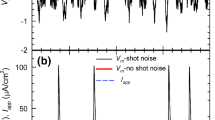Abstract
Linear system analysis was applied to calcium channel gating on the biological membrane. The conformational changes of calcium channel gating were expressed by an allosteric enzyme model composed of four subunits with corresponding voltage sensor molecules. The rate constants for the channel states transitions were obtained from reported biological experiments and simulation. The linear system analysis disclosed that the system is unstable and uncontrollable. Combinations of each input site and output of the channel gating state for the impulse responses and the singular values of the system showed that the potency of any particular input site for evoking impulse responses at any particular channel state and singular value is not equivalent among the channel states but favor for large numbers of voltage sensors and open channel states. Allosteric effects for modifying the concerted cooperative properties of the calcium channel have a significant influence on the singular values of the system. System optimization improved the system properties of the calcium channel and will be available for evaluating the economical channel gating of the biological membrane and artificial membrane.
Similar content being viewed by others
Author information
Authors and Affiliations
Additional information
Received 25 May 1998
Rights and permissions
About this article
Cite this article
Hirayama, H., Okita, Y. Linear systems analysis of kinetic behaviors of calcium ion channel gating on the biological membrane by an allosteric model. Computational Mechanics 24, 71–81 (1999). https://doi.org/10.1007/s004660050439
Issue Date:
DOI: https://doi.org/10.1007/s004660050439




